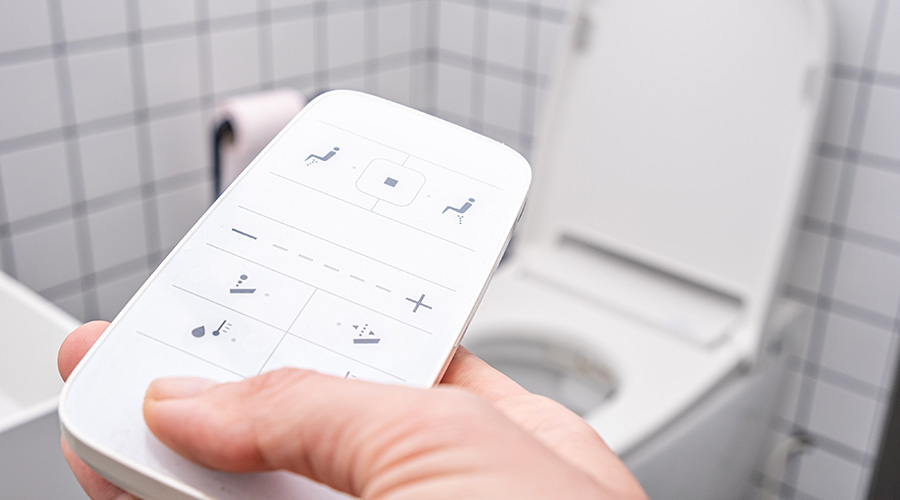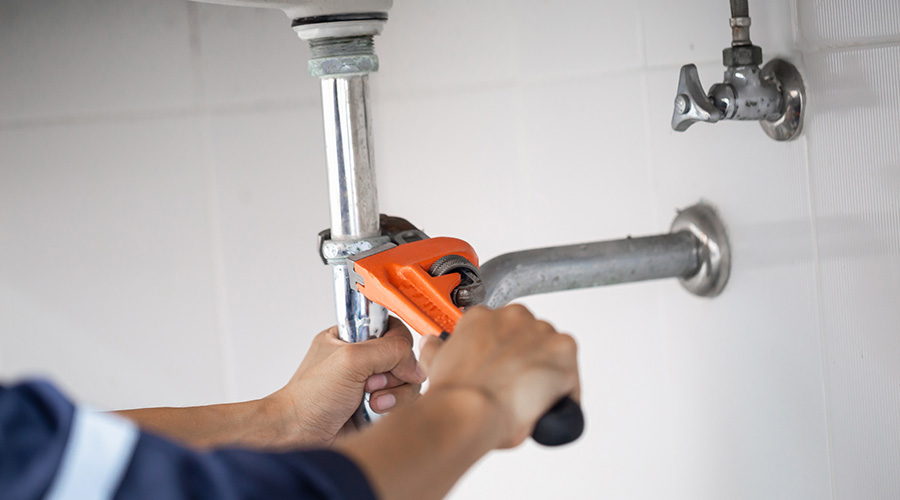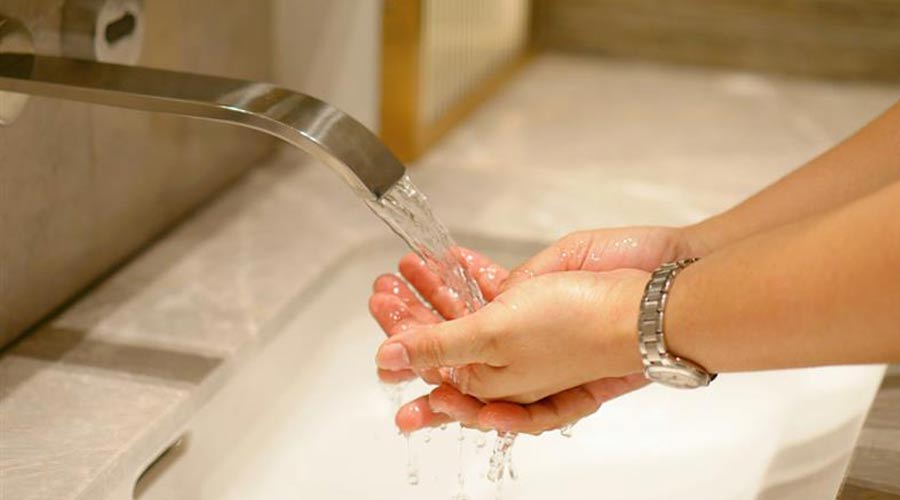Restroom Cleaning:
Savvy management strategies that help managers restore the tarnished image of public restrooms
The figures are staggering. A school district in Hawaii has 102,166 rest-rooms, while a hospital system in Oklahoma has 7,700, and a university in Illinois has 1,500. And all of them require cleaning.
No matter how one looks at it, cleaning restrooms is big business. Yet with this big business comes huge challenges. The American public seems largely disgusted by public restrooms, according to a recent survey. Nearly 30 percent of 1,001 Americans polled by an independent organization say they avoid public restrooms at all costs because of the fear of germs.
These two issues — many restrooms to clean and the potential for large numbers of complaints — presents housekeeping managers with enormous challenges.
A Check of Challenges
A quick review of the major challenges facing housekeeping managers demonstrates the scope of the task at hand.
Quality cleaning. As the survey indicated, restrooms often are cited by end users as not being clean. Some such problems might result from the improper scheduling of certain tasks, such as emptying trash too infrequently. Or problems also might arise from the fact that quality cleaning is not being performed. For example, cleaning crews often use chemicals incorrectly, do not follow procedures, or show a general inattention to detail — all of which can lead to dissatisfied customers.
Supply problems. Inadequate or poor-quality restroom supplies often are sources of criticism. Also, housekeeping staff too often receive the wrong chemicals for cleaning. Failure to provide the right chemicals can lead to dirty restrooms and even damaged fixtures.
Odor control. Many restrooms have unpleasant odors, some of which result from the way odors are handled. Instead of eliminating odors at the source through the use of quality disinfectants or odor-counteractants, facilities mask the odors with a spray or perfume that wears off shortly. Most odor problems result from a lack of cleaning or from failing to use appropriate cleaning chemicals.
Training. Too often, housekeeping personnel are shuttled off to clean restrooms with minimal training and limited equipment. Restrooms are one of the hardest areas to keep clean, but good training will ensure quality results. Housekeeping staffs need to be trained in procedures and methods for maintaining restrooms efficiently.
Equipment. Often, cleaners receive a broom, a mop, a bucket and instructions to clean the restrooms. Using the right equipment in the right manner creates the desired results, but failure to provide the right equipment can lead to disaster.
Gameplan for Success
What are some elements to a quality restroom cleaning program? How that one can visit some outstanding restrooms throughout the United States and find them clean and tidy and stocked with high-quality supplies? See more information on some top restrooms in the United States.
The secret to cleaning restrooms is quite simple: Develop a system, prove it, and stick with it.
Train, train, and train again. Cleaners must receive training on how to clean restrooms properly. Any cleaning can be reduced to a process of cleaning from ceiling to floor and from the farthest point in the room toward the exit.
Cleaners should not waste effort. If they clean counters first and then clean the mirrors above the counter, dust or debris could fall off the cleaning cloth or mirror onto the counter, dirtying the counter that had just been cleaned.
Housekeeping personnel should receive training on the right chemicals to use, as well as how to mix them properly and safely. Managers should make material safety data sheets available, and all primary and secondary chemical containers should be labeled for content.
Some facilities use color-coded labels with color-coded chemicals, a color-coded cleaning chart and icons to ensure that housekeeping crews use chemicals correctly. Good training enhances a staff’s ability to succeed in restroom cleaning, while poor-quality training will guarantee problems and complaints.
Supplies. To ensure restroom cleaning success, managers should spend a significant amount of time talking to business partners about such products as cleaning chemicals, hand soaps and paper supplies.
Cleaning chemicals such as disinfectants, bowl cleaners and odor counteractants must complement each other. If a disinfectant has an orange scent, the bowl cleaner a mint scent, and the odor-counteractant a floral scent, the combination of all scents might create an odor more offensive than the other odors in the facility.
Housekeeping crews should be able to dispense cleaning chemicals from a proportioning or dispensing system to ensure they mix chemicals correctly. Hand soaps should be of good quality, and managers should test several types before buying large quantities.
Paper towels also should be thoroughly tested prior to use. The best way to test supplies is to involve housekeeping crews and end users in the selection process. This simple step can prevent problems.
Supply dispensers. When possible, dispensers that hold restroom supplies — paper towels, toilet paper and hand soaps — should not run out of supplies until after the next cleaning day. In other words, they should hold enough of a product to prevent complaints about supplies that have run out.
Managers can partner with product distributors partners to determine use patterns and the best type of dispensers for a facility to help maximize the amount of time between dispenser refills. Managers might consider specifying paper dispensers that house side-by-side, medium- or large-size toilet papers rolls, as well as soap dispensers that can hold 1,000-2,000 ml of hand soap. And while the use of hand dryers minimizes the need for paper towels, customers often expect and demand paper towels.
Equipment. The arsenal of equipment for restroom cleaning continues to grow. Today’s equipment ranges from simple microfiber cloths that clean with minimal chemicals to restroom washers and sprayers that are lightweight and highly effective for cleaning from ceiling to floor in the minimum amount of time.
Some facilities use special mop buckets, swivel-head microfiber mop heads with squeegees, and mops with lightweight poles and handles that make restroom cleaning easier. Managers also can consider vapor steam-cleaning systems for deep cleaning, or automated floor-scrubbing equipment that cleans grout more easily and efficiently.
Quality control. Managers should develop a regular inspection system to ensure that restrooms are kept clean. One goal of such a program should be to anticipate problems. For example, many restaurants have a checklist on the restroom door that the cleaner checks after each cleaning. But this tactic requires thorough follow-up.
Some managers use paper inspection forms, but more managers use personal data assistants to collect data electronically that can be downloaded later to produce reports. Also, managers can talk to customers to ensure that the service their departments are providing meet customer expectations. This step also can head off complaints before they become bigger problems.
It does not matter whether the facility in question is a university, a hospital system, a school district or a restaurant chain. Clean bathrooms pay off and have a direct effect upon an organization’s bottom line.
The only thing a housekeeping manager must do to have a dramatic impact upon the perception of cleanliness in a facility is to develop and stick with an effective cleaning system to ensure that restrooms are clean.
Alan S. Bigger, R.E.H., is director of building services at the University of Notre Dame. Linda B. Bigger is a freelance editor.
Related Topics:











